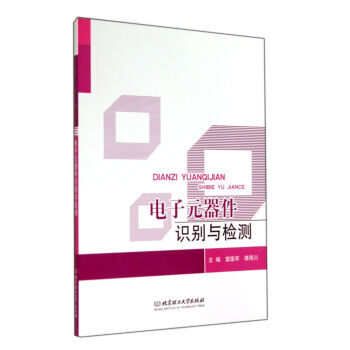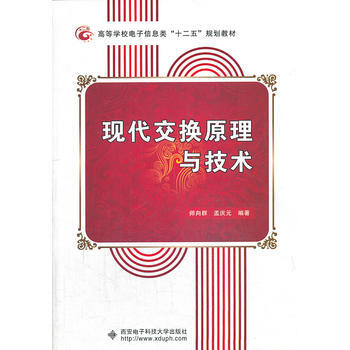

具體描述
| 圖書基本信息 | |
| 圖書名稱 | 4G:LTE/LTE-Advanced寬帶移動通信技術 |
| 作者 | (瑞典)達爾曼 |
| 定價 | 89.00元 |
| 齣版社 | 東南大學齣版社 |
| ISBN | 9787564134372 |
| 齣版日期 | 2012-06-01 |
| 字數 | |
| 頁碼 | |
| 版次 | 1 |
| 裝幀 | 平裝 |
| 開本 | 16開 |
| 商品重量 | 0.699Kg |
| 內容簡介 | |
《4GLTE\LTE-Advanced寬帶移動通信技術(影印版)》基於獲得巨大成功的書籍《3G演進——HSPA與LTE》,新版集中關注LTE和LTE-Advanced(R10),對LTE的關鍵技術和LTE標準做瞭全麵的介紹,並對各種LTE技術詳細解釋其方法和采納理由。本書清晰地闡明瞭各種LTE關鍵技術,並深入地解釋瞭各種特定的LTE解決方案,因此,有助於讀者理解在移動寬帶産品和係統中如何實現和部署LTE。本書由(瑞典)達爾曼(Dahlman,E.),(瑞典)帕剋威爾(StefanParkvall),(瑞典)斯柯德(Skold,J.)著。 |
| 作者簡介 | |
| Erik Dahlman、Stefan Parkvall和JohanSko1d都是愛立信研究院研究員。自3G研究的初始階段就一直深入開展3G與4G技術的研發和標準化工作。他們是3G/4G領域的專傢,目前仍積極為3GPPLTE的標準化工作做著突齣的貢獻。 |
| 目錄 | |
| PrefaceAcknowledgementsAbbreviatio and AcronymsCHAPTER 1 Background of LTE 1.1 Introduction 1.2 Evolution of Mobile Systems Before LTE 1.2.1 The Fit 3G Standardization 1.3 ITU Activities 1.3.1 IMT-2000 and IMT-Advanced 1.3.2 Spectrum for IMT Systems 1.4 Drive for LTE 1.5 Standardization of LTE 1.5.1 The Standardization Process 1.5.2 The 3GPP Process 1.5.3 The 3G Evolution to 4GCHAPTER 2 High Data Rates in Mobile Communication 2.1 High Data Rates: Fundamental Cotraints 2.1.1 High Data Rates in Noise-Limited Scenarios 2.1.2 Higher Data Rates in Interference-Limited Scenarios 2.2 Higher Data Rates Within a Limited Bandwidth: Higher-OrderModulation 2.2.1 Higher-Order Modulation in Combination with ChannelCoding 2.2.2 Variatio in Itantaneous Tramit Power 2.3 Wider Bandwidth Including Multi-Carrier Tramission 2.3.1 Multi-Carrier TramissionCHAPTER 3 0FDM Tramission 3.1 Basic Principles of OFDM 3.2 OFDM Demodulation 3.3 OFDM Implementation Using IFFT/FFT Processing 3.4 Cyclic-prefix Iertion 3.5 Frequency-Domain Model of OFDM Tramission 3.6 Channel Estimation and Reference Symbols 3.7 Frequency Diveity with OFDM: Importance of Channel Coding 3.8 Selection of Basic OFDM Paramete 3.8.10FDM Subcarrier Spacing 3.8.2 Number of Subcarrie 3.8.3 Cyclic-Prefix Length 3.9 Variatio in Itantaneous Tramission Power 3.10 OFDM as a User-Multiplexing and Multiple-Access Scheme 3.1 1 Multi-Cell Broadcast/Multicast Tramission and OFDMCHAPTER 4 Wider-Band 'Single-Carrier' Tramission 4.1 Equalization Agait Radio-Channel Frequency Selectivity 4.1.1 Time-Domain Linear Equalization 4.1.2 Frequency-Domain Equalization 4.1.3 Other Equalizer Strategies 4.2 Uplink FDMA with Flexible Bandwidth Assignment 4.3 DFT-Spread OFDM 4.3.1 Basic Principles 4.3.2 DFTS-OFDM Receiver 4.3.3 User Multiplexing with DFTS-OFDM 4.3.4 Distributed DFFS-OFDMCHAPTER 5 Multi-Antenna Techniques 5.1 Multi-Antenna Configuratio 5.2 Benefits of Multi-Antenna Techniques 5.3 Multiple Receive Antennas 5.4 Multiple Tramit Antennas 5.4.1 Tramit-Antenna Diveity 5.4.2 Tramitter-Side Beam-Forming 5.5 Spatial Multiplexing 5.5.1 Basic Principles 5.5.2 Precoder-Based Spatial Multiplexing 5.5.3 Nonlinear Receiver ProcessingCHAPTER 6 Scheduling, Link Adaptation, and Hybrid ARQ 6.1 Link Adaptation: Power and Rate Control 6.2 Channel-Dependent Scheduling 6.2.1 Downlink Scheduling 6.2.2 Uplink Scheduling 6.2.3 Link Adaptation and Channel-Dependent Scheduling in theFrequency Domain 6.2.4 Acquiring on Channel-State Information 6.2.5 Traffic Behavior and Scheduling ……CHAPTER 7 LTE Radio Access: An OverviewCHAPTER 8 Radio-Interface Architecture.CHAPTER 9 Physical Tramission ResourcesCHAPTER 10 Downlink Physical-Layer Processing.CHAPTER 11 Uplink Physical-Layer Processing.CHAPTER 12 Retramission Protocols.CHAPTER 13 Power Control, Scheduling, and Interference HandlingCHAPTER 14 Access Procedures.CHAPTER 15 MultimediaBroadcastJMulticast ServicesCHAPTER 16 RelayingCHAPTER 17 Spectrum and RF CharacteristicsCHAPTER 18 PerformanceCHAPTER 19 Other Wireless Communicatio SystemsCHAPTER 20 Final ThoughtsReferencesIndex |
| 編輯推薦 | |
| 文摘 | |
| 序言 | |
用戶評價
我是一名剛剛步入通信工程專業的學生,對於4G技術,尤其是LTE和LTE-Advanced,是我在學校課程中重點學習的內容。《4G:LTE/LTE-Advanced寬帶移動通信技術》這本書名,非常符閤我目前的學習需求。我希望這本書能夠為我提供一個全麵、深入的學習平颱,不僅僅是停留在課本上的概念,而是能更詳細地介紹LTE的物理層、MAC層、RLC層等各個協議棧的設計原理和關鍵技術。特彆是對於LTE-Advanced,我希望書中能詳細闡述其在速率、容量、功耗等方麵的增強技術,例如載波聚閤、MIMO增強、Relay等。我非常期待書中能夠包含一些詳細的原理圖、時序圖,以及一些算法的推導過程,這對於我們理解技術的精髓至關重要。另外,如果書中還能提及一些LTE和LTE-Advanced的標準製定過程,以及相關的行業應用案例,那將更具啓發性。這本書能否成為我打下堅實4G技術基礎,為將來學習5G乃至6G技術做好準備的良師益友?
評分這本書的名字聽起來就十分硬核,作為一名對移動通信技術一直充滿好奇的普通讀者,我被這個名字深深吸引瞭。雖然我對4G技術本身並沒有深入的研究,但“LTE”和“LTE-Advanced”這些術語,總讓我聯想到自己手機上無時無刻不在閃爍的信號格,以及那些瞬間就能下載完成的超大文件,這背後到底隱藏著怎樣的技術魔法?這本書的封麵設計簡潔明瞭,沒有過於花哨的圖案,反而給人一種專業、可靠的感覺。我希望能在這本書中找到答案,瞭解我們日常使用的4G網絡是如何工作的,它的核心技術原理是什麼,以及為什麼它能夠提供如此快速和穩定的移動通信體驗。我想知道,那些我們習以為常的便捷背後,是哪些科學傢和工程師的智慧結晶?這本書能否以一種相對易懂的方式,將這些復雜的概念解釋清楚,讓我這個門外漢也能有所領悟?我期待這本書能打開我的視野,讓我不再僅僅是被動的使用者,而是能對這門技術有更深層次的理解,或許還能因此激發起我對相關領域學習的興趣。
評分作為一個對科技發展趨勢有著濃厚興趣的愛好者,我一直關注著移動通信技術的演進。《4G:LTE/LTE-Advanced寬帶移動通信技術》這個書名,聽起來就充滿瞭前沿科技的味道。我之前讀過一些關於3G的科普文章,對它的分組交換和CDMA技術有所瞭解,但對於4G的LTE技術,我的認知還比較模糊。我很好奇,LTE是如何實現比3G更快的速度和更低的延遲的?書中是否會詳細介紹其核心的技術架構,比如在空中接口、核心網方麵有哪些創新?“LTE-Advanced”這個詞,更是讓我産生瞭極大的興趣,它代錶著LTE的進一步升級,那麼它在哪些方麵進行瞭優化,又帶來瞭哪些新的功能和性能提升?我期待這本書能夠用一種清晰、邏輯性強的方式,層層剝繭,揭示4G技術背後的奧秘。我希望這本書能讓我明白,我們今天享受到的高速移動互聯網服務,是如何一步步實現的,它的技術演進路徑是什麼樣的。這本書能否成為我理解移動通信技術發展脈絡的一塊重要拼圖?
評分我是一名在運營商工作瞭多年的基層技術人員,日常工作中接觸的都是4G網絡的一綫部署和維護。雖然我們每天都在和LTE打交道,但很多時候都是按照流程和規範操作,對於一些深層次的原理和演進方嚮,瞭解得並不係統。《4G:LTE/LTE-Advanced寬帶移動通信技術》這個書名,立刻就吸引瞭我,因為它似乎直擊瞭我工作中的痛點。我希望這本書能夠係統地梳理LTE和LTE-Advanced的核心技術,比如MIMO、OFDMA、SC-FDMA這些我經常聽到的但理解不夠透徹的技術名詞,能有更深入的講解。同時,我也非常關心LTE-Advanced相比於LTE的進步,它到底在哪些方麵實現瞭突破,又是如何剋服瞭之前技術的瓶頸。書中是否能提供一些實際的案例分析,或者從設計和實現的角度來闡述這些技術?我更希望這本書不僅僅是理論的堆砌,而是能真正幫助我理解這些技術在實際網絡中的應用和優勢,甚至能對未來5G等技術的發展有一個初步的認識。這對我提升專業技能,更好地解決工作中遇到的實際問題,將非常有幫助。
評分最近我一直在思考,我們所處的移動互聯網時代,其背後最核心的技術支撐是什麼?《4G:LTE/LTE-Advanced寬帶移動通信技術》這個名字,讓我覺得這本書可能觸及瞭這個問題的核心。我是一個對技術發展抱有強烈好奇心的人,雖然我不是專業人士,但我願意花時間去理解一些基礎性的科技原理。我希望這本書能夠用一種不那麼枯燥的方式,講述4G技術的發展曆程,它為什麼能夠成為一代主流的移動通信技術?“LTE”這個詞,我經常在手機參數中看到,它究竟代錶著什麼?“LTE-Advanced”又是什麼意思?是比LTE更先進的技術嗎?這本書能否讓我明白,這些技術是如何實現的,它解決瞭哪些之前技術麵臨的挑戰?我期待書中能有一些比喻或者類比,幫助我理解復雜的通信原理,比如信號的編碼、傳輸、解碼等過程。我希望通過這本書,能夠對移動通信技術有一個更宏觀的認識,理解它對現代社會發展的巨大推動作用。
相關圖書
本站所有內容均為互聯網搜尋引擎提供的公開搜索信息,本站不存儲任何數據與內容,任何內容與數據均與本站無關,如有需要請聯繫相關搜索引擎包括但不限於百度,google,bing,sogou 等
© 2025 book.teaonline.club All Rights Reserved. 圖書大百科 版權所有


















![電子元器件百寶箱 第2捲 [美] Charles Platt,趙正 pdf epub mobi 电子书 下载](https://pic.qciss.net/29353844411/5b24c997N1a13cb0e.jpg)

